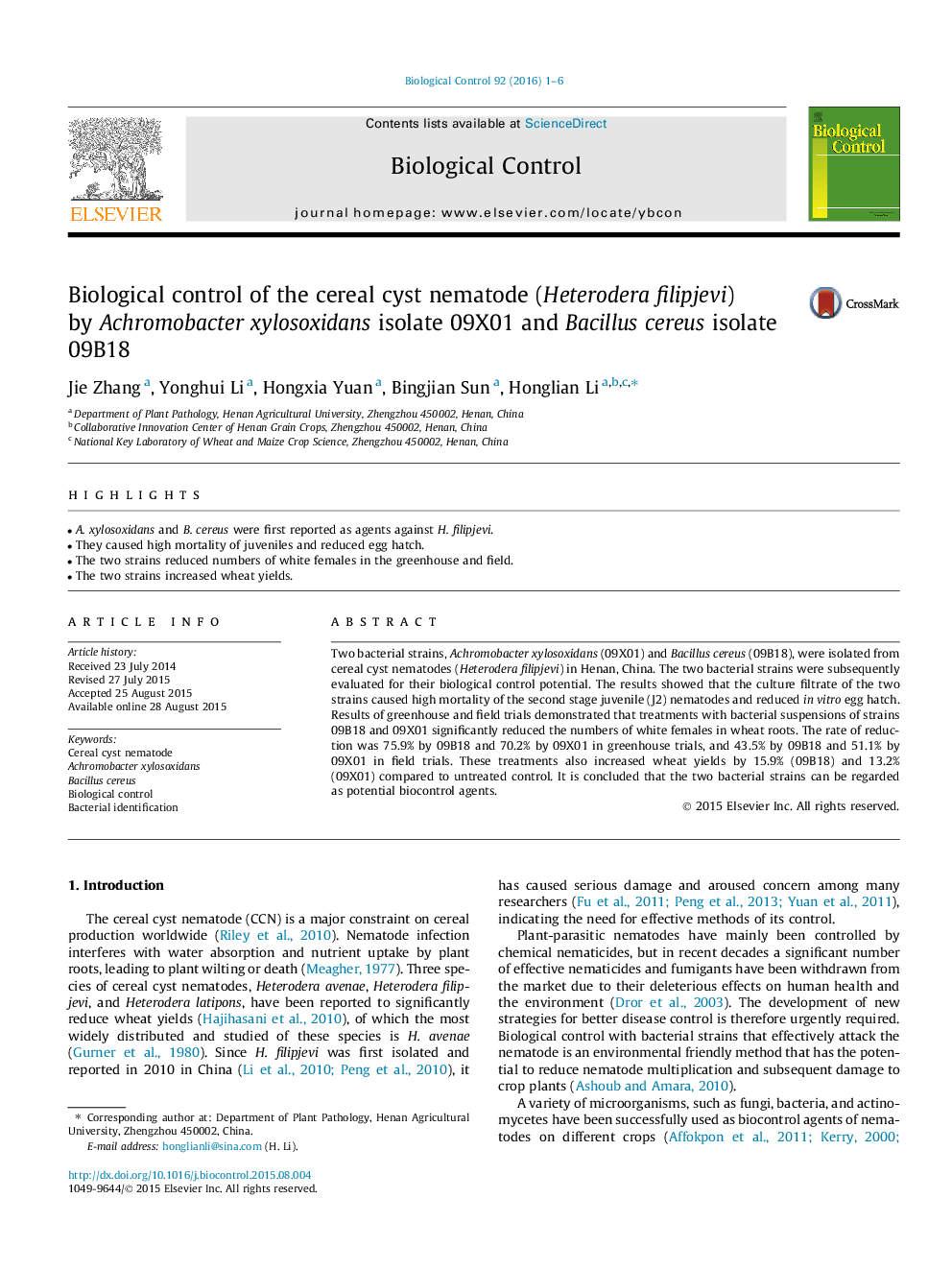| Article ID | Journal | Published Year | Pages | File Type |
|---|---|---|---|---|
| 4503699 | Biological Control | 2016 | 6 Pages |
•A. xylosoxidans and B. cereus were first reported as agents against H. filipjevi.•They caused high mortality of juveniles and reduced egg hatch.•The two strains reduced numbers of white females in the greenhouse and field.•The two strains increased wheat yields.
Two bacterial strains, Achromobacter xylosoxidans (09X01) and Bacillus cereus (09B18), were isolated from cereal cyst nematodes (Heterodera filipjevi) in Henan, China. The two bacterial strains were subsequently evaluated for their biological control potential. The results showed that the culture filtrate of the two strains caused high mortality of the second stage juvenile (J2) nematodes and reduced in vitro egg hatch. Results of greenhouse and field trials demonstrated that treatments with bacterial suspensions of strains 09B18 and 09X01 significantly reduced the numbers of white females in wheat roots. The rate of reduction was 75.9% by 09B18 and 70.2% by 09X01 in greenhouse trials, and 43.5% by 09B18 and 51.1% by 09X01 in field trials. These treatments also increased wheat yields by 15.9% (09B18) and 13.2% (09X01) compared to untreated control. It is concluded that the two bacterial strains can be regarded as potential biocontrol agents.
